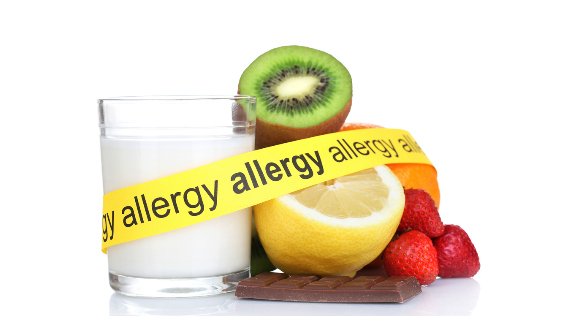Image: Shutterstock
What is an Allergy Elimination Diet for Your Baby?
It is most easy to spot an allergy/reaction when baby is first beginning solids as the variety of foods being offered is limited. I encourage that you follow the “4 day wait rule”, or a variation of it, especially if you have a history of allergies in the family.
If you suspect that your infant is reacting to something in his new solid food diet, the most common remedy, as with breastfeeding, is to put baby on an elimination diet.
The elimination diet is used for infants who are just beginning solid foods/complementary feedings and who show what appears to be a possible reaction to said food.
An “elimination diet” involves cutting out the food(s) that you feel may be causing your baby to becolicky, rashy, gassy or otherwise unnaturally fussy. Most sources recommend that the suspected offending food be eliminated for a total of 2 weeks to ensure that that food is completely out of your system.
For example, food components such as the milk and soy protein may linger in baby’s system for up to 10-14 days.
Suspected Allergy/Reaction to Something Mommy is Eating
If you suspect that your infant is reacting to something in your breast milk, the most common remedy is to put yourself on an elimination diet.
This involves cutting out the food(s) that you feel may be the culprits in creating a colicky, gassy or otherwise unnaturally fussy infant. The elimination diet is also used for infants who are just beginning solid foods/complementary feedings and who show what appears to be a possible reaction to said food.
As with eliminating from baby’s diet, most sources recommend that the suspected offending food be eliminated for a total of 2 weeks to ensure that that food is completely out of your system. For example, food components such as the milk protein may linger in your system and/or in breast milk for up to 10-14 days. It is recommended that you consult with your physician, your pediatrician and/or lactation consultant to ensure that you are safely practicing the Elimination Diet
“Elimination-diet patients should be vigilant to replace any nutrients missing from their restricted diet. For example, calcium supplements may be advisable for someone eliminating dairy products from the diet. Needless to say, any prescribed medications should be continued during any diet.
Putting a very young child on an elimination diet may endanger the child’s nutrition and normal growth. A breastfeeding mother may harm both her own health and that of her infant if she undertakes an elimination diet during lactation.” via The Elimination Diet from The Encyclopedia of Nursing and Allied Health
Elimination & Rotation Diet and the Nursing Mommy
The nursing mother is the one who typically has to change her diet in order to reduce the allergic symptoms that her child may be suffering.
The most common allergens that impact a baby are cow’s milk, soy protein and egg white. Other common allergens include meat, fish, peanuts, onions, cabbage, berries, tomatoes and chocolate.
A rotation diet is a noninvasive measure that allows the nursing mother to pinpoint her baby’s particular allergens and modify her own diet in a way that will, hopefully, eliminate the infant’s allergic reactions.
